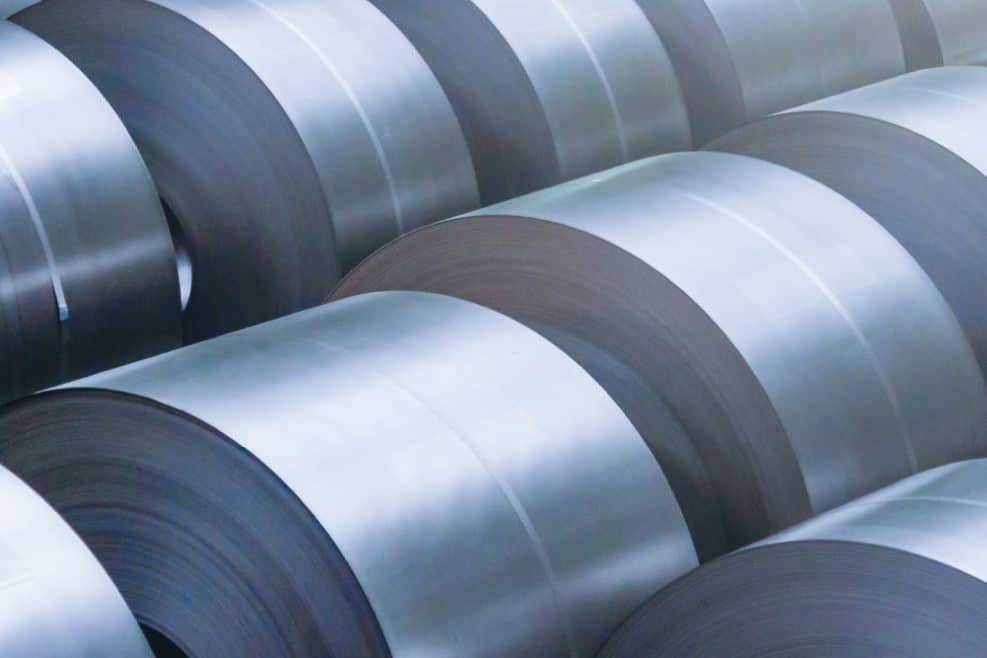ESD
Electromagnetic
Slag Detection
Clean Steel with Electromagnetic Slag Detection
ESD 300 and ESD 400
Slag-free transfer of molten steel is critical for prime or scrap and critical for profit or loss in producing high-quality steels. Regardless of whether it is for furnaces, ladles, or distributors: Large quantities of slag must never be transferred to the next vessel.
The ESD Electromagnetic Slag Detection, positioned at the ladle bottom, sounds an alarm as soon as slag flows through and sends a signal to automatically close the slide-gate.
Developed with a background of 30 years of experience, based on 300 slag detection systems with 3600 ladles installed, the new generation of AMEPA Slag Detection with ESD 300 and ESD 400 once again sets a new benchmark for the industry.
- High steel purity, even in the transition zones
- Reduction of the quantity of slag carry over by up to 90%
- Increasing the yield by up to 1.0%
- Up to 50% longer sequences
- Up to 60% less clogging of the SEN
- Longer service life for the refractory
Download
Your contact partner
Pierre Bacher
Technical Sales Manager
Dipl.-Ing. Benjamin Ruf
Technical Sales Manager
The benefits
The digital transmission and evaluation of the measured signals additionally increases the sensitivity and reliability for slag detection.
Utilizing a remote maintenance access means that the AMEPA expert knowledge can be quickly made available.
The start-of-casting detection considerably increases the process safety when working with ladle shroud pipe manipulators.
The ESD provides interfaces for all customary industrial communication standards.
With the rule-based data analysis, a tool now exists for optimizing production processes and plant availability.
Users can now select between a yield-optimizing or quality-optimizing mode of operation of the slag detection systems.
Configurable reports can be sent automatically to user groups.
01

Start-of-casting and
steel penetration detection
When casting submerged, it is not possible to see from the outside whether the steel flow is started after opening the slide gate or whether sintered sand blocks the spout. The module signals whether the steel flow has started after opening the slide gate or whether the ladle shroud has to be removed again in order to burn free the inner nozzle. The signals can also often detect steel penetration between inner nozzle and well block, early enough for appropriate measures to be initiated.
02

Comprehensive reporting
The AMEPA REPORT software presents the user with measurement results and status messages in tabular and graphic form, which can also be automatically sent as shift reports or daily reports in the form of emails to previously configured user groups and at set times. In the course of the increasing cross-plant networking for processes, the system also stores measurement data and results in a database and makes detailed – current and historical – data available in the user’s own company network.
The contents of the database can be accessed at any time within the company network by utilizing common web browsers. The AMEPA REPORT software therefore makes data relating to slag carry-over available to different user groups at any time, each in a customized presentation.
03

Reliable analysis – fast knowledge
The AMEPA SMART ANALYSIS module will subsequently analyze the measured values from the sensors and automatically evaluate the data on the basis of rules. It detects anomalies, for example, measured values which deviate from the target value, also very quickly, without having to spend a lot of time tracking down individual measured value sequences.
Information relating to maintenance work which is due can be derived from the evaluation.
Measuring principle
The sensor of the ESD 300/400 comprises one primary coil and one secondary coil. Both are arranged in a ring-shaped metal cassette which concentrically encloses the inner nozzle of the slide-gate valve. The primary coil is fed with an alternating current which induces eddy currents in the out flowing molten steel. When slag enters the melt, then the voltage on the secondary coil alters. This alteration is evaluated in order to determine the slag content.







